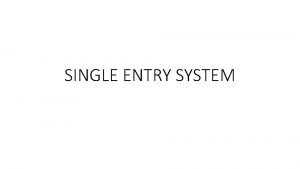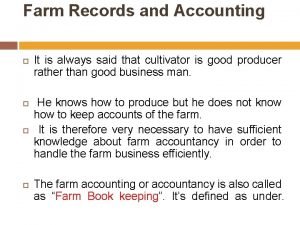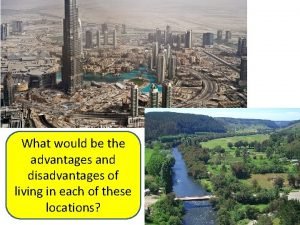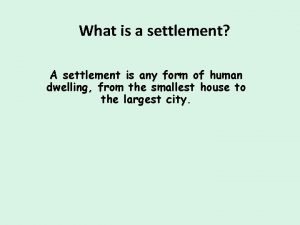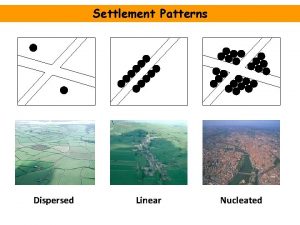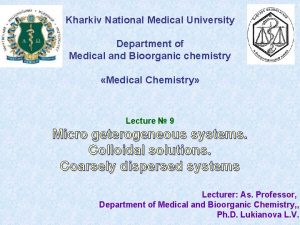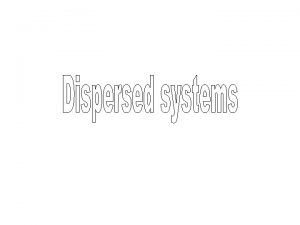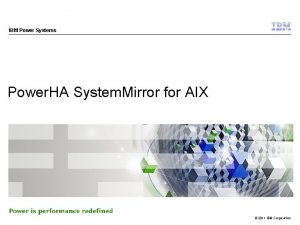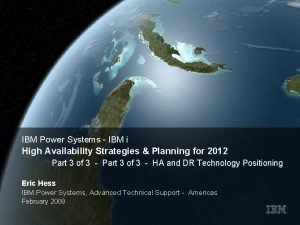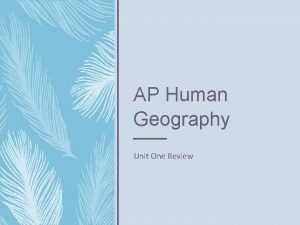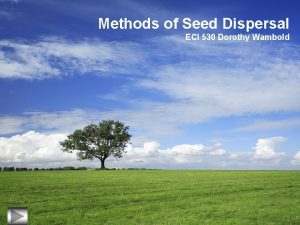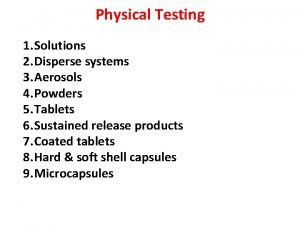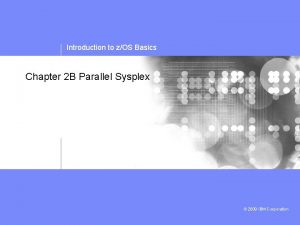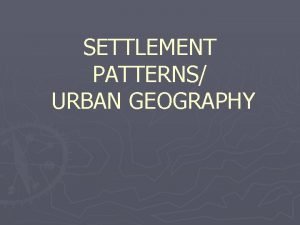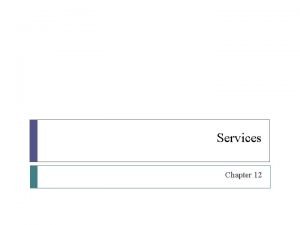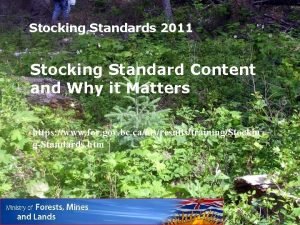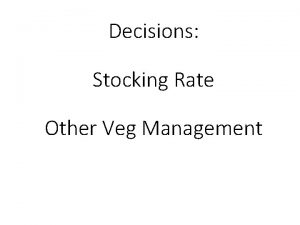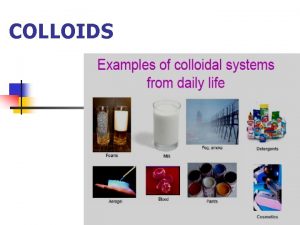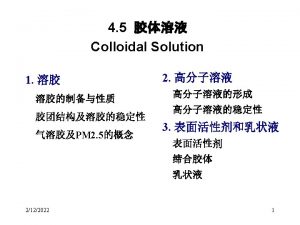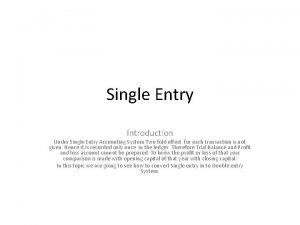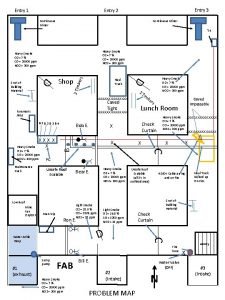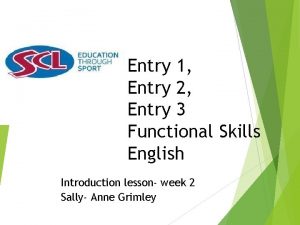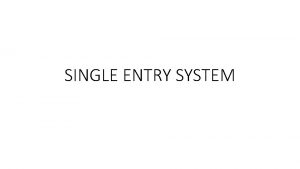Single Entry Dispersed Retention Stocking Standard SEDRSS Framework


















- Slides: 18

Single Entry Dispersed Retention Stocking Standard (SEDRSS) Framework for Coastal second Growth Douglas –fir October 28, 2016 Coast Region FRPA Implementation Team

Background • Framework is designed to address stand level sustainability issues often associated with partial cut practices • Framework is intended to replace the Single Tree Selection multi-layered stocking standards • Framework is designed to create a suitable regeneration environment without additional harvest entries as well as maintain some stand value for future harvest. Coast Region FRPA Implementation Team

What is the single entry dispersed retention stocking standard? • A standard to be applied in stands where overstorey trees contribute to the stocking obligation but no future harvest entries are required to meet stand structural objectives Coast Region FRPA Implementation Team

SEDRSS - Fdc Stocking standard Principles • Be based on ecologically suitable species • Be measureable • Describe where and when it will apply (situations or circumstances) • Have clearly defined target conditions • Have a specified time element for achievement • Maintain or improve forest health (leave tree criteria) • Maintain or minimize the impacts to stand productivity • Maintain or enhance the commercially valuable timber supply • Be flexible Coast Region FRPA Implementation Team

SEDRSS Application - Fdc This stocking standard framework is not meant for: Clearcuts or stands with low levels of dispersed retention. • For areas with ≤ 4 m 2/ha dispersed RBA an even aged stocking standard is appropriate. Stands with no regeneration objective • For stands with ≥ 40 m 2/ha dispersed RBA, a standard based on RBA only with no regeneration component is appropriate. The SEDRSS Fdc standard is calibrated for: • Second growth Fdc or Fdc/Hw mixes (> 80 % second growth) where the site index for Fdc is between 24 and 36 • CDF and CWH subzones in maritime and submaritime areas Coast Region FRPA Implementation

SEDRSS Application Fdc Low retention ( < 4 m 2 per ha) • The landscape is not constrained by non timber resource objectives • SEDRSS does not apply • Even –aged standards apply • Fdc primary species for regeneration Moderate retention (4 to 10 m 2 per ha) • Resource values moderately constrain post harvest stand structure • SEDRSS applies • Fd primary species for regeneration (ecologically suitable) Coast Region FRPA Implementation

SEDRSS Application Fdc Moderate retention ( 10 - 16 m 2 per ha) • Resource values moderately constrain post harvest stand structure • SEDRSS applies • Fdc secondary species for regeneration (marginally ecologically suitable) Moderate retention (16 -40 m 2 per ha) • Resource values moderately constrain post harvest stand structure • SEDRSS applies • Fd not ecologically suitable for regeneration Coast Region FRPA Implementation

SEDRSS Application - Fdc High retention (> 40 m 2 per ha) • Resource objectives do not allow for much flexibility in post harvest stand Structure. • SEDRSS does not apply. • e. g. , Intermediate cutting , commercial thinning Coast Region FRPA Implementation

SEDRSS Application - Fdc SEDRSS-Fdc may apply to aggregate retention if: • > 15 % of the Su occupied by internal aggregates or • > 15 m 2/ha mean basal area over entire Su Coast Region FRPA Implementation

SEDRSS – Fdc DFP table (Smith 2014) Coast Region FRPA Implementation

Overstorey trees Key points: Crop tree: • A tree with acceptable timber value and of acceptable health and vigour • Tree must meet or exceed damage criteria as indicated on survey reference card for multi-storied damage criteria Coast Region FRPA Implementation Team

Overstorey trees Key points: Non Crop tree: • Trees that do not meet the criteria as a crop tree or are considered non commercial trees. • e. g. , a tree that does not meet the forest health criteria such as hemlock dwarf mistletoe, root disease, scarring Coast Region FRPA Implementation Team

Regeneration Key points: • Trees < 12. 5 cm dbh • Meet the advanced regeneration criteria • Outside the dripline 1 of an overstorey tree • ≥ the identified minimum height • contain an upright leader 1 “the vertical boundary of the outside of the outer live foliage of the overstorey tree”. An understory tree is considered outside the Dripline if “the main stem pith of the understorey stem is outside of the Dripline as defined above”. Coast Region FRPA Implementation Team

SEDRSS Alternative Approaches 1) Deviation from Potential (DFP) approach • Integrates the retained overstorey using residual basal area with regeneration using deviation from potential 2) DFP Tabular interpretation approach • Integrates the retained overstorey and the regeneration using the DFP concepts, but presents them in a tabular format similar to even-aged standards Coast Region FRPA Implementation Team

Fdc DFP stocking obligation criteria Stocking table Situation and Circumstance e. g. , CWH dm 01 SI 50< 30 m For use in visual corridors with a VQO of PR Average DFP ≤ 0. 26 Proportion of plots in “open” class is: ≤ 25% (shaded pink on DFP table) RBA between the prescribed levels: 4 to 40 m 2/ha or Coast Region FRPA Implementation Team

Example SEDRSS – Fd Tabular approach • Regeneration Guide BGCU Species Site Occupancy Only used during plots Layer Free Growing Guide Regen Delay (max yrs) All BA combinations are applicable to survey plots One of these 4 BA combinations are applicable to final SU REGEN / FG SEDRSS obligations MITD Only used during plots Species Height (m) Residual Layer (L 1) (≥ 12. 5 dbh) CWH dm Site series 01 Fdc, Cw, Hw (BA m 2 /ha) Regen Layer (L 2 -L 4) (WS / ha. TSS – Target MSS - Minimum) 0 -4 5 -10 11 -16 17 -23 24 -39 ≥ 40 m 2 /ha m 2 /ha 900 TSS 800 TSS 700 TSS 500 TSS 400 TSS 0 Fdc 1 Cw 2, Hw 500 MSS 400 MSS 300 MSS 200 MSS 100 MSS 0 3 N/A 3 L 1 Drip line or 2. 0 m (L 2 -L 4) N/A Fdc 3. 0 Hw 3. 0 Cw 1. 5 1 Fd ecologically suitable where < 10 m 2 per ha. Restricted to max 200 sph where retention > 10 m 2 per and < 16 m 2 per ha 2 Cw ecologically suitable where <10 m 2 per ha. Restricted to max 200 sph where retention > 10 m 2 per and < 23 m 2 per ha Coast Region FRPA Implementation Team

Common Issues associated with SEDRSS stocking standard submissions 1) Lack of clarity around the scope of application of SEDRSS (i. e. , situations and circumstances) 2) Lack of consistent terminology (e. g. , mixing of terminology like % RBA vs actual RBA) 3) Lack of clarity around leave tree criteria for residual trees (addressing short and long term forest health risks) 4) Ecological acceptability of some trees species in the regeneration layer (e. g. , consideration for shade tolerance) Coast Region FRPA Implementation

SEDRSS Fdc Questions ? Coast Region FRPA Implementation
 Stocking management
Stocking management Single entry system meaning
Single entry system meaning What is single entry system
What is single entry system Generating and exploiting new entries
Generating and exploiting new entries Disadvantage of nucleated settlement
Disadvantage of nucleated settlement Dispersed settlement
Dispersed settlement What is nucleated settlement
What is nucleated settlement Difference between deflocculated and flocculated suspension
Difference between deflocculated and flocculated suspension Dispersion phase and dispersion medium
Dispersion phase and dispersion medium Interfacial properties of suspended particles ppt
Interfacial properties of suspended particles ppt Aix smit
Aix smit Iseries high availability
Iseries high availability Metes and bounds ap human geography
Metes and bounds ap human geography Beggar ticks seed dispersal
Beggar ticks seed dispersal Cherry dispersal
Cherry dispersal Dispersed
Dispersed Parallel sysplex licence charge
Parallel sysplex licence charge Dispersed rural settlement definition
Dispersed rural settlement definition The basic systems and services of a city
The basic systems and services of a city

